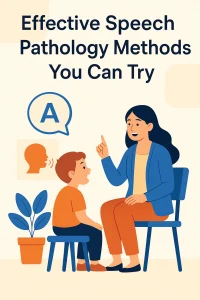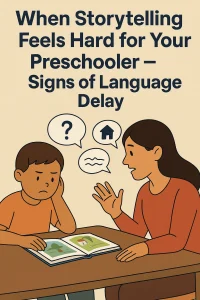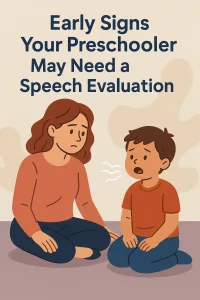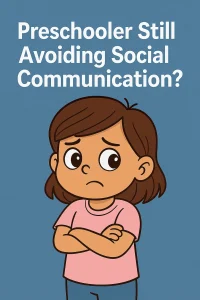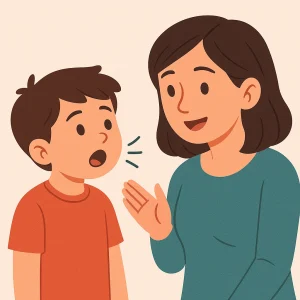Regain Your Speech After Stroke: Effective Therapy Solutions
By Rajini D
Last Updated: May 2, 2024
Have you or someone close to you experienced a stroke? It’s a challenging journey, particularly when it comes to changes in speech and communication. Strokes, affecting the brain’s blood flow, often disrupt the delicate areas responsible for speech and language, leading to difficulties that can feel overwhelming.
Yet, amidst these challenges, there is a strong beacon of hope. With the right approach and timely intervention, speech recovery is not just a possibility but a realistic goal. Speech therapy plays a pivotal role in this journey, offering techniques and support tailored to individual needs. This therapy isn’t just about relearning words; it’s about reclaiming your voice and your ability to connect with others.
Also Read: Advanced Speech Therapy Exercises for Post-Stroke Rehabilitation
Understanding Stroke and Its Effects on Speech
What Happens During a Stroke?
A stroke occurs when the blood supply to part of your brain is interrupted or reduced, preventing brain tissue from getting oxygen and nutrients. Brain cells begin to die in minutes. This is why a stroke is a medical emergency, and prompt treatment is crucial. Recognizing the signs and acting fast can lead to a better recovery and less long-term damage.
- Ischemic strokes make up about 87% of all cases. They happen when a blood clot obstructs a blood vessel supplying blood to the brain. This blockage can develop locally within a tiny artery in the brain or can travel there from elsewhere in the body.
- Hemorrhagic strokes, though less common, occur when a weakened blood vessel in the brain bursts. This results in blood leaking into the brain and causing swelling and pressure, damaging cells and tissue in the brain.
Both types of strokes can affect speech in profound ways. The brain has specialized areas that are responsible for understanding and producing language. Most notably, the left hemisphere of the brain houses key language processing areas like Broca’s area, which deals with the production of speech, and Wernicke’s area, which is crucial for understanding language. When these areas are damaged by a stroke, it can lead to conditions such as aphasia, where a person’s ability to communicate is affected. They might struggle to form coherent sentences, find the right words, or understand what others are saying.
Common Speech Disorders After Stroke
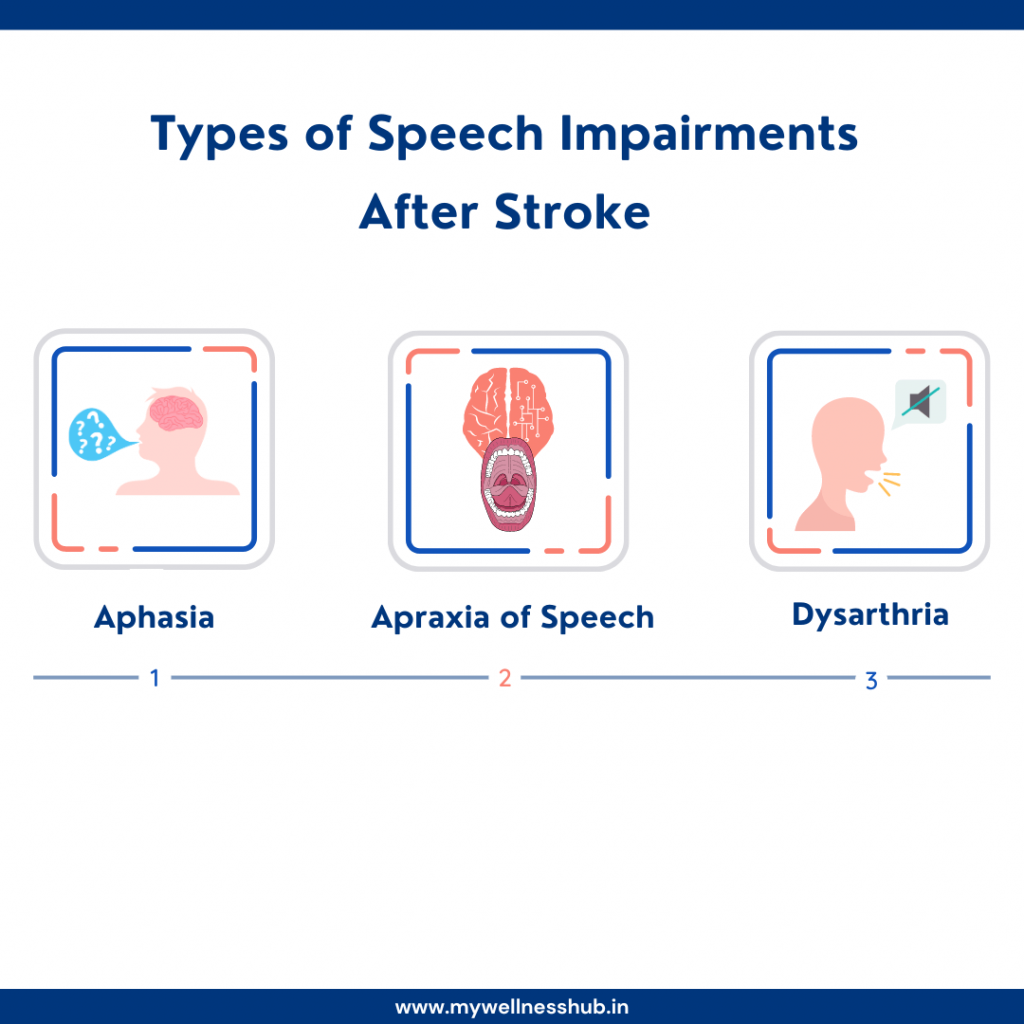
Speech disorders such as aphasia, apraxia, and dysarthria are common following a stroke, impacting not just the stroke survivors but also their families and caregivers. Understanding these conditions can help in navigating the recovery path more effectively.
Aphasia often occurs after damage to the left side of the brain, the area responsible for language. Imagine suddenly finding words elusive or sentences confusing. This is the reality for many with aphasia. They may struggle to speak, understand, read, or write. While aphasia affects a person’s communication skills, it doesn’t impact their intelligence. People with aphasia may know exactly what they want to say but find it frustratingly difficult to express it or to process what others are saying.
Apraxia of speech is a motor speech disorder that makes it hard to speak. It can occur when the pathways in the brain that plan the sequence of movements involved in producing speech are damaged. The person knows what they wants to say, but their brain has difficulty coordinating the muscle movements necessary to say those words. They might struggle to place their lips, tongue, or jaw correctly to produce the right sounds.
Dysarthria, unlike aphasia, involves a weakness or paralysis of the muscles used in speaking, which are controlled by the nervous system. This can result in slow or slurred speech that is difficult to understand. Listeners might find it hard to make out what the person is trying to say, which can be as frustrating for the listener as it is for the speaker.
Each of these disorders affects communication in different ways, but all can significantly impact quality of life. The good news? Speech therapy can offer substantial improvements. Techniques and strategies tailored to each condition can help reclaim the ability to communicate, thereby enhancing life’s quality.
Learn more on our article Navigating Online Speech Therapy for Non-Verbal Children: A Guide for Parents and Educators.
The Path to Speech Recovery
First Steps in Speech Recovery
The journey to regain speech after a stroke begins with an immediate and thorough assessment by a speech-language pathologist (SLP). This early evaluation is crucial as it lays the foundation for all subsequent recovery efforts. Understanding the nature and extent of speech impairment allows the SLP to design a recovery plan that is both effective and tailored to the individual’s specific needs.
Imagine this as the first step on a path leading back to your full communication abilities. The speech-language pathologist will conduct a series of tests to determine how the stroke has affected your ability to understand and produce language. This may involve simple exercises like naming objects, forming sentences, or following commands. The results from these tests will help pinpoint the precise areas where you need the most support and guide the therapy’s direction.
Speech Therapy Techniques
Once the initial assessment is complete, your speech-language pathologist will employ a variety of speech therapy techniques to facilitate your recovery. These methods are designed to rebuild your language skills and ensure that you can communicate effectively once again.
One fundamental technique is articulation therapy, which helps stroke survivors improve their clarity of speech by practicing sounds, words, and sentences. This can be especially helpful for those dealing with apraxia or dysarthria, where speech clarity is affected.
Another key strategy is language intervention activities. These activities involve exercises that stimulate language development through reading and writing tasks, conversations, and other engaging communication practices. For those struggling with aphasia, these activities are vital in regaining language comprehension and fluency.
Cognitive communication therapies are used to enhance cognitive skills that support communication, such as memory, problem-solving, and other thought processes. Especially after a stroke, reinforcing these cognitive aspects is essential to improve overall communication abilities.
Lastly, technology-aided practices may include using apps or devices that facilitate language comprehension and speech production. These tools can offer alternative ways for stroke survivors to express themselves when words are hard to find.
Comparison of Speech Therapy Techniques
| Technique | Primary Benefit | Best Used For |
|---|---|---|
| Articulation Therapy | Improves pronunciation and clarity of speech. | Dysarthria and Apraxia – where patients struggle with muscle control in speech. |
| Language Intervention Activities | Enhances comprehension and ability to express ideas. | Aphasia – helps those who have lost the ability to understand or express speech. |
| Cognitive-Communication Therapies | Boosts cognitive skills that support communication, such as memory, attention, and problem-solving. | Global communication improvement – beneficial for patients needing comprehensive cognitive support. |
| Technology-Aided Practices | Facilitates communication using electronic devices, apps, and software. | Severe speech impairments – assists those unable to speak clearly or at all. |
Know more: Articulation Disorder in Children: Signs, Causes & Treatment
Long-Term Recovery and Support
Role of Family and Caregivers
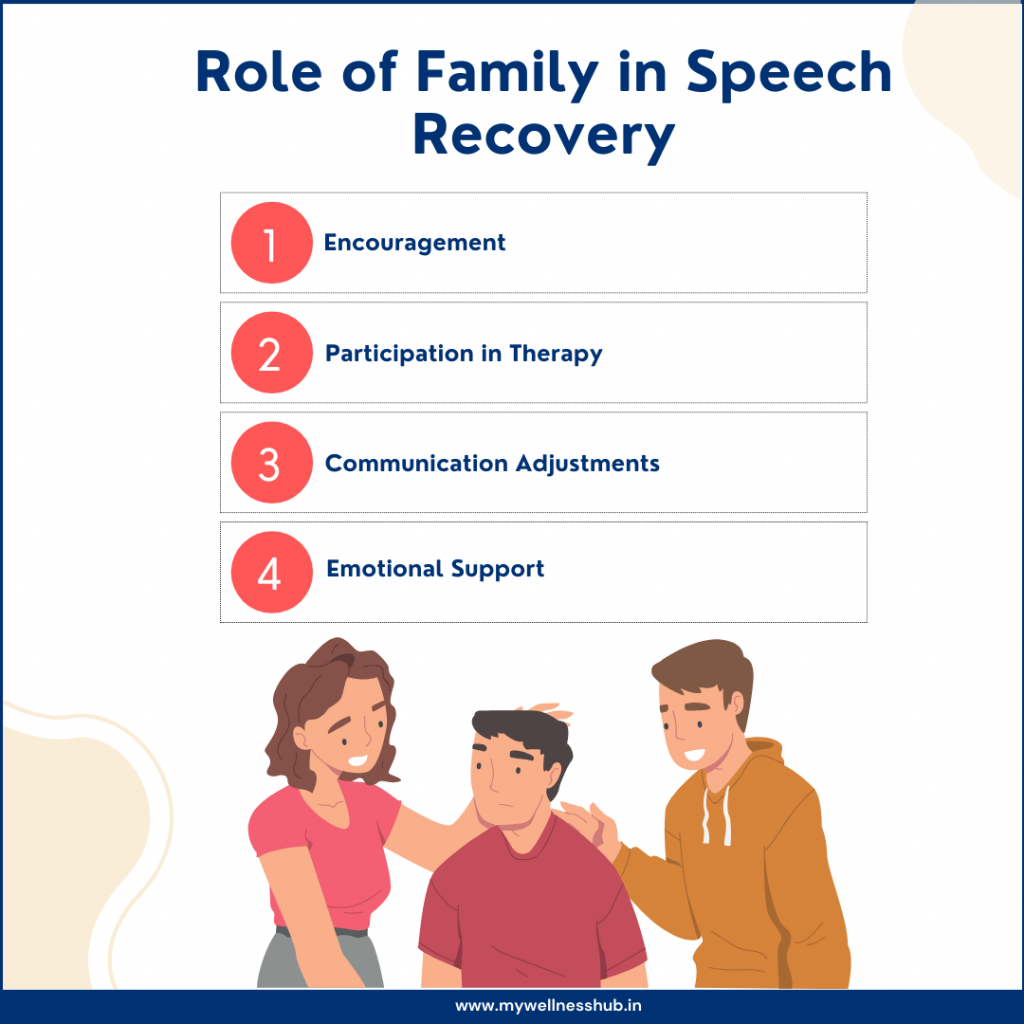
Recovering from a stroke, especially when it impacts speech, isn’t just a personal battle; it’s a journey that involves the whole family. The support of loved ones is pivotal in navigating the challenging path of speech recovery. Here are some ways that family and caregivers can make a meaningful difference:
- Patience and Encouragement: Encourage your loved one at every step of their recovery. Celebrate small victories together, which can significantly boost their morale and motivation.
- Active Participation in Therapy: Engage with the speech-language pathologist to understand the therapy process. Learn exercises that can be practiced at home to ensure consistent progress.
- Adapting Communication: Use clear, simple sentences and maintain eye contact. Give your loved one ample time to respond, showing that you value what they have to say, no matter how long it takes them to express it.
- Creating a Supportive Environment: Reduce background noise during conversations and focus on one-on-one interactions whenever possible to help limit distractions.
Advanced Tools and Technologies
In today’s digital age, technology plays a crucial role in enhancing speech recovery. Augmentative and Alternative Communication (AAC) devices can be life-changing for those whose speech has been severely affected. These devices range from simple picture boards to sophisticated software that synthesizes speech from text or muscle movements.
- Choosing the Right AAC Device: Selecting the appropriate device depends on the individual’s specific needs and abilities. Some devices are highly customizable and can be tailored to the user’s preferences and lifestyle.
- Integrating Technology with Therapy: AAC devices can be used alongside traditional speech therapy to encourage communication and interaction. They provide a way for stroke survivors to express themselves when words fail them, ensuring they can still participate in daily conversations.
Living with Speech Changes
Daily Life and Communication
Adjusting to life after a stroke with speech changes can be challenging, but with the right strategies, many individuals find new ways to thrive and maintain their social connections. Here are practical tips for navigating daily life and enhancing communication:
- Simplify Communication: Use simple sentences and straightforward language. Keep conversations clear to reduce misunderstandings and frustration.
- Use Supportive Technology: Consider using apps and devices designed to assist communication. Tools like speech-generating devices or apps that convert text to speech can be invaluable in social situations.
- Practice Regularly: Regular practice with a speech-language pathologist or at home can improve speech clarity over time. The more you practice, the more confident you will feel.
- Stay Social: Engage in social activities that do not put pressure on communication. Group activities like art classes or book clubs can allow participation without the need for constant speaking.
- Educate Your Circle: Inform friends and family about the best ways to communicate with you. This might include giving them tips on how to understand you better and how they can help keep conversations flowing.
Preventing Future Strokes
Living with speech changes also involves taking steps to prevent another stroke. Here’s how you can reduce the risk and protect your health:
- Follow Medical Advice: Regular check-ups with your healthcare provider are crucial. They can monitor your health and adjust treatments as needed.
- Manage Risk Factors: Control high blood pressure, diabetes, and cholesterol with medication and lifestyle changes. If you smoke, seek help to stop.
- Stay Active: Incorporate regular physical activity into your routine, which can help manage weight and reduce stroke risk.
- Eat Healthily: Focus on a balanced diet rich in fruits, vegetables, lean proteins, and whole grains. Limit intake of salts, fats, and sugars.
- Monitor Heart Health: Conditions like atrial fibrillation increase stroke risk. Work with your healthcare provider to manage any heart conditions.
For comprehensive guides on stroke prevention and lifestyle tips, explore the Wellness Hub. Our resources are designed to help you lead a healthier life, minimizing the risk of future strokes.
Conclusion
As we conclude our discussion on speech recovery after a stroke, it’s clear that ongoing support and effective speech therapy are crucial. Regaining the ability to communicate goes beyond just speaking; it’s about reconnecting with the world around you. Whether it’s through professional help, family support, or the use of helpful technologies, every step is important. Remember, recovery might be slow, but each day offers a chance to improve.
We encourage you to share your experiences or any questions you have about your recovery. Sharing your journey can inspire others and help build a supportive community. Visit Wellness Hub to connect with others, find more resources, and keep learning about overcoming post-stroke challenges. Together, we can make the recovery journey less daunting for everyone involved.
Frequently Asked Questions:
1. What are the first signs of speech problems after a stroke?
The first signs can include slurred speech, difficulty finding words, or complete loss of the ability to speak. It’s crucial to seek immediate evaluation from a healthcare professional if these symptoms appear.
2. How can speech therapy help after a stroke?
Speech therapy helps stroke survivors by improving their ability to speak, understand, read, and write. Therapists use various techniques tailored to each individual’s specific needs, enhancing both communication skills and overall recovery.
3. What is aphasia, and how does it affect stroke survivors?
Aphasia is a condition that affects the ability to communicate. It can occur when parts of the brain responsible for language are damaged during a stroke. This may result in difficulty speaking, reading, writing, or understanding language.
4. Can speech recovery continue long after a stroke?
Yes, many stroke survivors experience continued improvements in their speech and communication skills for years after a stroke. Ongoing speech therapy, regular practice, and family support are essential components of long-term recovery.
5. What role do family and caregivers play in speech recovery?
Family and caregivers are vital in the recovery process. They can support speech recovery by engaging in communication practices recommended by therapists, creating a supportive home environment, and providing emotional support.
6. Are there any technological aids that can help with speech recovery?
Yes, several technological aids, such as speech-generating devices and apps, can assist those with speech impairments. These tools help enhance communication, allowing individuals to express themselves more effectively.
7. How can I prevent another stroke from happening?
Preventing another stroke involves managing risk factors such as high blood pressure, diabetes, and high cholesterol. Lifestyle changes, regular exercise, a healthy diet, and following medical advice are crucial steps in stroke prevention.
8. Where can I find more resources on speech recovery after a stroke?
You can find comprehensive guides and additional resources on speech recovery after a stroke at Wellness Hub. Our site offers detailed articles, therapy options, and community support for stroke survivors and their caregivers.
9. What lifestyle changes can help improve speech recovery after a stroke?
To aid speech recovery, consider adopting a healthier lifestyle that includes balanced nutrition, regular physical activity, and adequate sleep. Avoiding alcohol and smoking also contributes positively. Engaging in cognitive exercises and social interactions can further enhance speech and overall brain health.
10. How long does it typically take to see improvement in speech after starting therapy?
The time it takes to see improvement in speech can vary widely among stroke survivors. Some may notice changes as soon as a few weeks, while others might take months or even longer. The key factors influencing recovery speed include the severity of the stroke, the specific area of the brain affected, early intervention, and the individual’s overall health and motivation.
About the Author:
Rajini Darugupally
M.Sc., Speech-Language Pathologist (9+ years of experience)
Rajini is a passionate and dedicated Speech-Language Pathologist with over 9+ years of experience, specializing in both developmental speech and language disorders in children and rehabilitation in adults. Driven by a desire to empower each individual to find their voice, Rajini brings a wealth of experience and a warm, genuine approach to therapy.
Currently, at Wellness Hub, she thrives in a team environment that values innovation, compassion, and achieving results for their clients.
Connect with Rajini to learn more about how she can help you or your loved one find their voice.
Book your Free Consultation Today
Parent/Caregiver Info:
Client’s Details:
* Error Message




